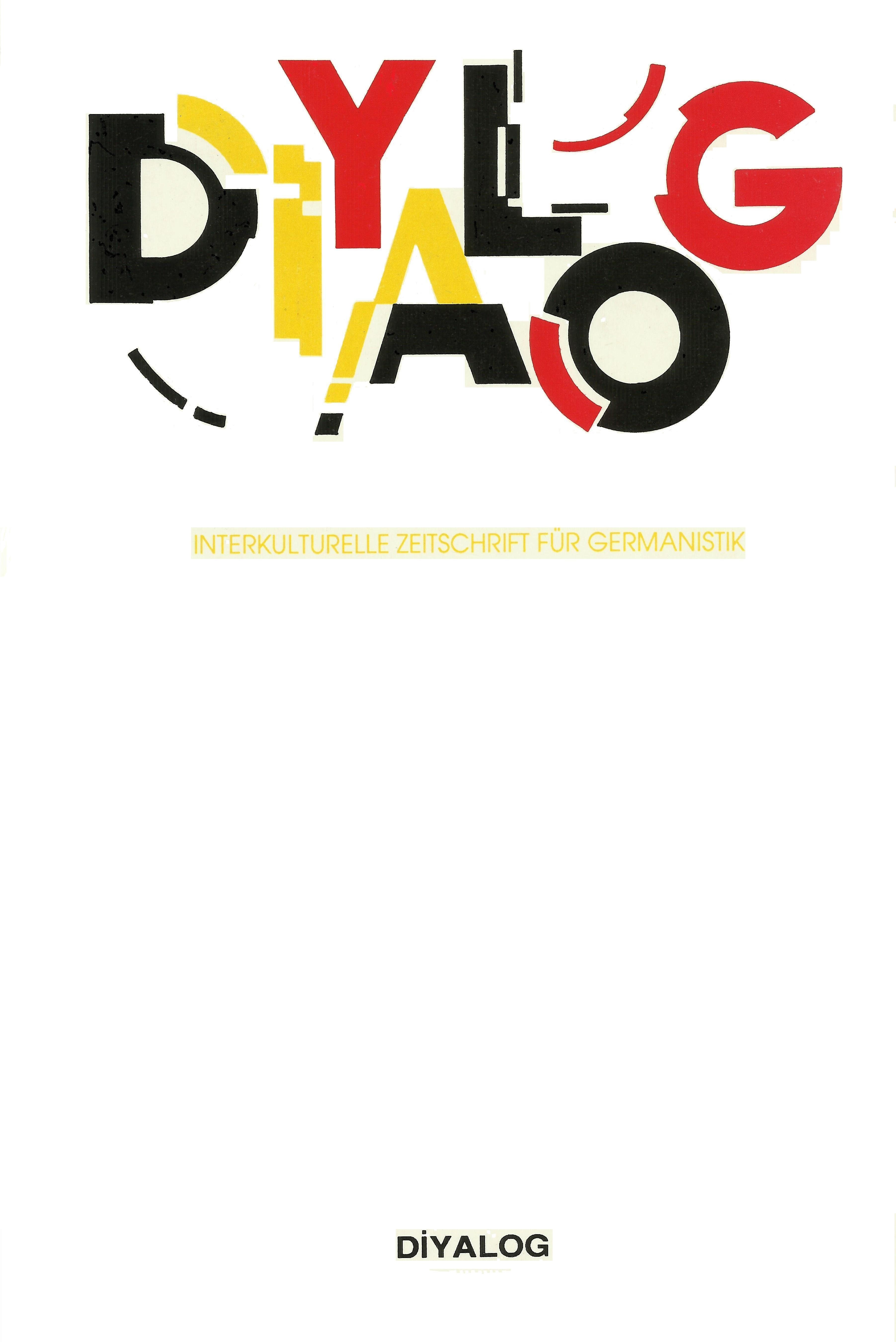Die Relevanz paratextueller Elemente beim Übersetzungsprozess
Günümüzde, çevrilecek olan metnin sayfa düzeninin basıma hazır hale getirilmesinin çevirmenlerden
sıkça istenmesi, çevirmenlik mesleğine olan bakış açısının değiştiğini açıkça göstermektedir.
Kaynak kültürde var olan görsel bilgilerin alımlanması ve bunların erek kültüre uygun bir şekilde
aktarılması gerekmektedir. Çeviri eğitiminde ‘başarılı’ bir çevirinin yalınızca sözcüklerin ve söz
diziminin doğru aktarılmasıyla gerçekleşmeyeceği bilgisi edebi metinlere yönelik çözümleme yöntemini
kullanarak verilebilir. Yan metinlerin değerlendirilmesi anlama sürecine katkı sağlar ve kültürel
öğrenmeyi kolaylaştır. Bu bağlamda öğrencilere uyguladıkları çeviri stratejisini gerekçelendirme beceresi
kazandırır. Edebi metinlerin çözümlenmesinde, yazar tarafından bilinçli kullanılan biçimsel özelliklerin
ayırt edilmesi önemlidir. Bu doğrultudan yola çıkarak, bu çalışmada, çeviri sürecinde yan metinlerin
önemini ortaya çıkarmaya çalışılacak ve bu bağlamda makro yapının çözümlenmesi yönteminden
yararlanılacaktır. Bu nedenle “Wir Kinder vom Bahnhof Zoo,-Christiane F” adlı eserin Türkçe çevirisi
“Eroin,-Christiane F’in Korkunç Anıları” [Die erschreckenden Erlebnisse der Christiane F.]
kullanılacaktır. Ele alınan metnin çözümlenmesi, Koller tarafından ileri sürülen “alımlayıcının farklı
beklentilerini saptayan ölçütler” (2004) göz önünde bulundurarak yapılacaktır.
Anahtar Kelimeler:
Yan metin, makro yapının çözümlenmesi, “Wir Kinder vom Bahnhof Zoo - Christiane F.” adlı eserin Türkçe çevirisi
The relevance of paratexts in translation process
Today, publishers frequently demand the translators to prepare the page format of the texts they have
translated, which indicates that the point of view towards the translational profession has changed.
It is necessary for translators to perceive the visual information in the source culture and convey them to
the target culture appropriately. For a ‘successful’ translation, transferring only the semantic and syntactic
structures correctly is not sufficient and this idea can be given in translation education by the method of
literary text analysis. The fact that the subsidiary texts are evaluated contributes to the comprehension
process and helps target culture learning. In literary text analysis, the distinction of the author’s deliberate
use of stylistic features is crucial. Through this viewpoint, this study will try to reveal the importance of
paratext in the translation process. In order to do this, the method of the macro structure analysis will be
used in this context. To achieve the aim of the study, the Turkish translation of “Wir Kinder vom Bahnhof
Zoo,- Christiane F”, that is “Eroin,- Christiane F’in Korkunç Anıları” [Die erschreckenden Erlebnisse
der Christiane F.] will be used. The analysis of this text will be carried out by means of “the criteria
identifying the different expectations of receptor” (Koller 2004).
Keywords:
Paratext, the macro structure analysis, the Turkish translation of “Wir Kinder vom Bahnhof Zoo - Christiane F.”,
___
- Christiane F. (2008): Wir Kinder vom Bahnhof Zoo, nach Tonbandprotokollen aufgeschrieben von Kai Hermann und Horst Rieck. Mit einem Vorwort von Horst Eberhard Richter. 50. Auflage.
- Hamburg: Gruner & Jahr. Christiane F. (2015): Wir Kinder vom Bahnhof Zoo, nach Tonbandprotokollen aufgeschrieben von Kai Hermann und Horst Rieck, Hamburg: Carlsen.
- Christiane F. (1981): Eroin, Küçük Christiane F.’in Korkunç Anıları, Istanbul: Kelebek.
- Christiane F. (2015): EROİN, - CHRİSTİANE F.’NİN KORKUNÇ ANILARI, Istanbul: Altın Kitaplar.
- Heinze, Carsten (2007): “Der paratextuelle Aufbau der Autobiographie”, in: BIOS-Zeitschrift für Biographieforschung, Oral History und Lebensverlaufsanalysen, Jg. 20, Heft 1, S.19-39, URL:http://nbn-resolving.de/urn:nbn:de:0168-ssoar-270453[letztes Zugriffsdatum: 25.05.2016]
- Genette, Gérard (1989): Paratexte. Mit einem Vorwort von Harald Weinrich, Frankfurt am Main:Campus. Gerzymisch-Arbogast, Heidrun (1994): Übersetzungswissenschaftliches Propädeutikum, Tübingen:Francke.
- Kansu-Yetkiner, Neslihan / Yetkin-Karakoç, Nihal (2015): Yüzyıllık Süreçte Tevfik Fikret’in Şermin Yapıtı Bağlamında Diliçi Çeviri ve Yanmetin Olgusu, in: Türk Dünya Sosyal Bilimler Dergisi, sayı 75, Ankara: bilig, S. 195-225.
- Koller, Werner (2004): Einführung in die Übersetzungswissenschaft, 7. Aufl., Wiebelsheim: Quelle&Meyer Verlag.
- Kupsch-Losereit, Sigrid (1999): “Gerichtsurteile”, in: Snell-Hornby, Maria / Hönig, Hans G. u.a. (Hg.): Handbuch Translation, 2. verb. Auflage, Tübingen: Stauffenburg, S. 225-228.
- Nord, Christiane (1991): Textanalyse und Übersetzen, Theoretische Grundlagen, Methoden und didaktische Anwendung einer übersetzungsrelevanten Textanalyse, Heidelberg: Julius Gross.
- Nord, Christiane (2004): “Die Übersetzung von Titeln und Überschriften aus sprachwissenschaftlicher Perspektive”, in: Kittel, Harald / Frank, Armin Paul et al (Hg.): Übersetzung, Translation, Traduction, 1. Teilband, Berlin: Walter de Gruyter, S. 573-579.
- Reiss, Katharina (2000): “Texttyp und Übersetzen”, in: Snell-Hornby, Maria / Kadric, Mira (Hg.): Grundfragen der Übersetzungswissenschaft. Wiener Vorlesungen, Bd.1, Wien: WUV.
- Resch, Renate (2006): Translatorische Kompetenz, Texte im Kulturtransfer, Bd. 291, Frankfurt am Main: Peter Lang.
- Risku, Hanna (2004): Translationsmanagmen. Interkulturelle Fachkommunikation im Informationszeitalter, Tübingen: Günter Narr
- Sandberg, Beatrice (2004): “Autobiographisches Schreiben-Gedanken zur Übertragung von Leben in Literatur”, in Albrecht, Jörn / Gerzymisch-Arbogast, Heidrun / Rothfuß-Bastian, Dorothee (Hg.): Übersetzung, Translation, Traduction, Neue Forschungsfragen in der Diskussion, Festschrift für Werner Koller, Bd.5, Tübingen: Gunter Narr, S. 163-183.
- Schreiber Michael (1999): “Übersetzungstypen und Übersetzungsverfahren”, in: Snell-Hornby, Maria / Hönig, Hans G. et al (Hg.): Handbuch Translation, 2. verb. Auflage, Tübingen: Stauffenburg, S. 151-154.
- Stolze, Radegundis (1994): Übersetzungstheorien, Eine Einführung, Tübingen: Gunter Narr.
- Zuschlag, Katrin (2002): Narrativik und literarisches Übersetzen. Erzähltechnische Merkmale als Invariante der Übersetzung, Tübingen:Gunter Narr.
- Pellatt, Valerie (2013): Text, Extratext, Metatext and Paratext in Translation, Cambridge: Cambrige Scholar.
- Internetquellen
- Bittorf, Wilhelm (06.04.1981): Irgendwas Irres muss laufen, in: Der Spiegel 15/1981 s.230, http://www.spiegel.de/spiegel/print/ [Zugriff am 15.07.2015]
- Kammerer, Miriam (06.08.2015): www.swp.de [Zugriff am 15.07.2015] Kramper, Gernot (26.10.2013): http://www.stern.de/panorama/gesellschaft/schullektuere[Zugriff am 15.07.2015]
- Olcay, Sümeyya (2014): aşk bağımlılığın düşürdüğü Sersefil halleri bağışlayabilirmi? ,in: Yeşilay dergisi, s.53-57, http://www.yesilay.org.tr/yesilaydergisi/Subat_2014/files/assets/basichtml/index.html#55 [Zugriff am 20.07.2015]
- Thomas, Stefan (2005): Berliner Szenentreffpunkt Bahnhof Zoo, in: http://www.stern.de/wissenschaft/mensch/:Bahnhof-Zoo-27-Jahre-Christiane-F.-/544241.html. [Zugriff am 20.07.2015]
- Uluç, Hıncal (26.12.2013): Christiane F’nin gerçek yaşamı, in: http://www.sabah.com.tr/yazarlar/uluc/(2013)
- www.buchhandlung-seiffert.de [Zugriff am 20.07.2015]
- www.duden.de [Zugriff am 20.07.2015]
- www.spassamlesenverlag.de [Zugriff am 20.07.2015]
- www.cumhuriyetarsivi.com/katalog/192/sayfa/1981 [Zugriff am 20.07.2015]
- www.memurlar.net/haber/66058 [Zugriff am 20.07.2015]
- www.haberturk.com/kultur-sanat/haber/1102097-seyredilmesi-gereken-10-alman-klasigi [Zugriff am 20.07.2015]
- ISSN: 2148-1482
- Yayın Aralığı: Yılda 2 Sayı
- Başlangıç: 2003
- Yayıncı: Germanistler Derneği
Sayıdaki Diğer Makaleler
Uluslararası Savaş ve Kültür Sempozyumu Üzerine Kısa Bir Değerlendirme
Wirksamkeit und Nachhaltigkeit vorintegrativer Spracharbeit
Die Relevanz paratextueller Elemente beim Übersetzungsprozess
Mutlu Er, Selda Koçak, Max Florian Hertsch, Begüm Kardeş
Kongre Raporu: V. Uluslararası Batı Kültürü ve Edebiyatları Araştırmaları Sempozyumu
